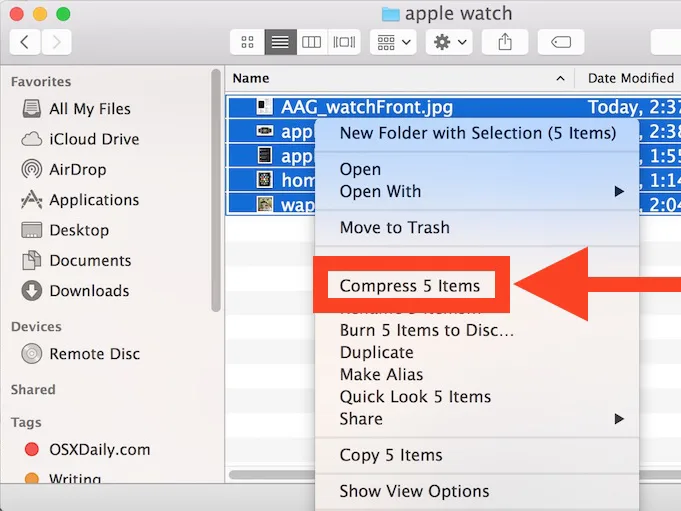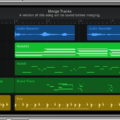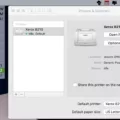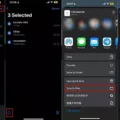Are you looking for a quick and easy way to zip photos on your Mac? Zipping photos is the perfect way to save space on your computer and make moving large amounts of pictures from one place to another much easier. Luckily, compressing photos on Mac is a simple process that only requires a few clicks. In this blog post, we’ll walk you through how to zip photos on Mac using both the built-in compression feature and third-party software.
The easiest way to zip photos on Mac is to use the built-in compression feature. To begin, locate all of the photos that you want to compress into one folder. Then, open the folder and select all of the images by pressing Command + A (or Control + A in Windows). Once all of your images are selected, right-click (or control-click) on any image and select “Compress [number] Items” from the dropdown menu. Depending on how many images you have selected, you may see a different number than “[number].”
This will create a new .zip file with all of your selected images inside it. You can now move this .zip file anywhere you want or email it directly from your desktop!
Using Third-Party Software
If you don’t have access to a built-in compression tool or if you need more advanced features such as password protection or custom output formats, then you can use third-party software such as WinZip or Unarchiver for Mac. Both programs offer more advanced features than Apple’s built-in compression tool, including password protection and custom output formats.
To use either program follow these steps:
1. Download and install either WinZip or Unarchiver for Mac onto your computer.
2. Locate all of the photos that you want to compress into one folder.
3. Open either WinZip or Unarchiver for Mac and drag and drop all of your images into the program window.
4. Select which format you want to save your zipped files in (such as .zip or .rar).
5. If desired, add a password for extra security before compressing your files by selecting “Add Password” from the File menu at the top of the window (WinZip only).
6. Select “Compress” from either the File menu at top of the window (WinZip) or click the “Create Archive” button at the bottom right corner (Unarchiver).
7. Your new compressed file will be saved in its original location with its original name plus a .zip extension added at end of the file name!
That’s it! Now you know how to zip photos on Mac using both Apple’s built-in compression tool and third-party programs like WinZip and Unarchiver for Mac! Compressing photos is an easy way to save space and make transferring large numbers of pictures fast and convenient – so give it a try today!

Creating a Zip File of Photos
Creating a zip file of photos is a great way to save space and easily share multiple images. To do this, first, select all the photos you want to compress into a zip file. Then right-click on them and select Send to > Compressed (zipped) folder. This will create a new zipped folder with the same name as the original files in the same location. You can then rename the zip file if you’d like or just keep it with its original title. Once your zip file is created, you can easily upload it to an email or cloud storage so that you can easily share it with others.
Creating a Zip File on a Mac
To put files into a zip file on Mac, start by gathering all the files you wish to compress into one folder. Then, right-click or control-click the folder and select ‘Compress [Folder Name]’. This will create a zipped file containing all of the contents of your original folder. You can also drag and drop the folder onto the Finder window or toolbar icon, or select “File > Compress [Folder Name]” from the menu bar at the top of your screen. Once you’ve compressed your files, you can rename or move them as desired.
Troubleshooting Issues with Zipping Files on Mac
If you’re unable to zip a file on your Mac, it may be due to several different issues. It could be because the file is too large for the maximum size of a zip file, or it could be because the permissions settings for that particular file or folder are incorrect. You can check these permissions settings by selecting the item and choosing File > Get Info, or pressing Command-I. Another potential issue could be that your Mac doesn’t have enough available disk space to create a zip file. Make sure there’s enough free space on your computer before attempting to zip any files.
Zipping Photos: Is It Possible?
Yes, you can absolutely zip your photos! Using WinZip, you can easily compress your photos into a single folder while preserving the quality of the images. To do this, simply open WinZip and select the photos you want to compress. Then click ‘Add’ and select the folder where you’d like to save your compressed files. Finally, click ‘Create’ and your photos will be compressed into a single folder. The recipient then needs to decompress the zip file to open the folder and view the images.
Converting Multiple Pictures to a ZIP File
To convert multiple pictures to a ZIP file, begin by creating a folder in your computer’s file system. Then, place one or more images into the new folder. Right-click on the folder name to bring up the context menu. Select “Send to” from the menu and choose “Compressed (zipped) folder”. This will create a ZIP file with all of the images contained in it. Note that if you are dealing with many pictures or if the total size of all of the pictures is large, this process may take some time.
Compressing Large Files to Smaller Sizes
Compressing a large file into a smaller size is an easy process that can be done using either a third-party program or Windows built-in tools. With third-party programs, you can select the folder or file you want to compress and choose the desired compression level. Windows also offers its own file compression utility, which can be accessed by right-clicking on the file or folder and selecting “Send To > Compressed (zipped) folder”. Once the file is compressed, you will be able to send it more easily through e-mail or other platforms. Depending on the type of file and how much compression you are looking for, either one of these options could help reduce your large file to a smaller size.
Compressing Files on Mac
Compressing a file on Mac means reducing the amount of space it takes up on your hard disk. It does this by using algorithms to identify patterns within the data and replace them with smaller pieces of code. This process makes the file much smaller, but can still be opened and used in its original form. The most common type of compression is known as ZIP, which is supported by most operating systems including Mac OS. Compressing files can be done quickly and easily with tools like the built-in Archive Utility or third-party applications such as WinZip or StuffIt Expander.
Troubleshooting ZIP File Compression Issues
There can be a few different reasons why your file won’t compress to a ZIP file. It could be due to the file type since some types of files are already compressed and cannot be compressed further. It could also be because the file contains encrypted data, which will not compress at all. Additionally, if the file is already quite small, there may not be anything left to compress, even with ZIP compression.








